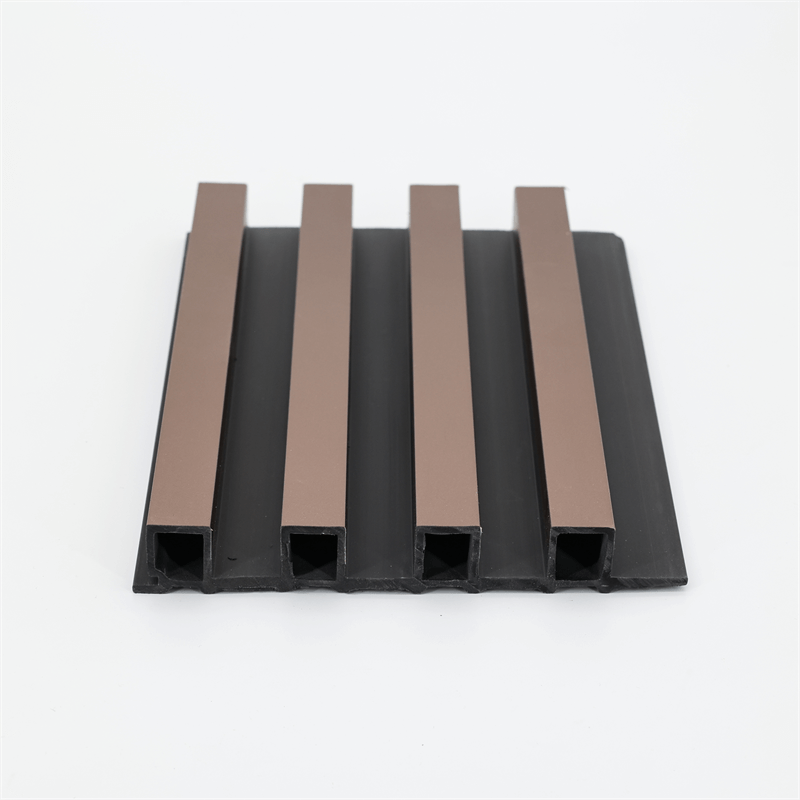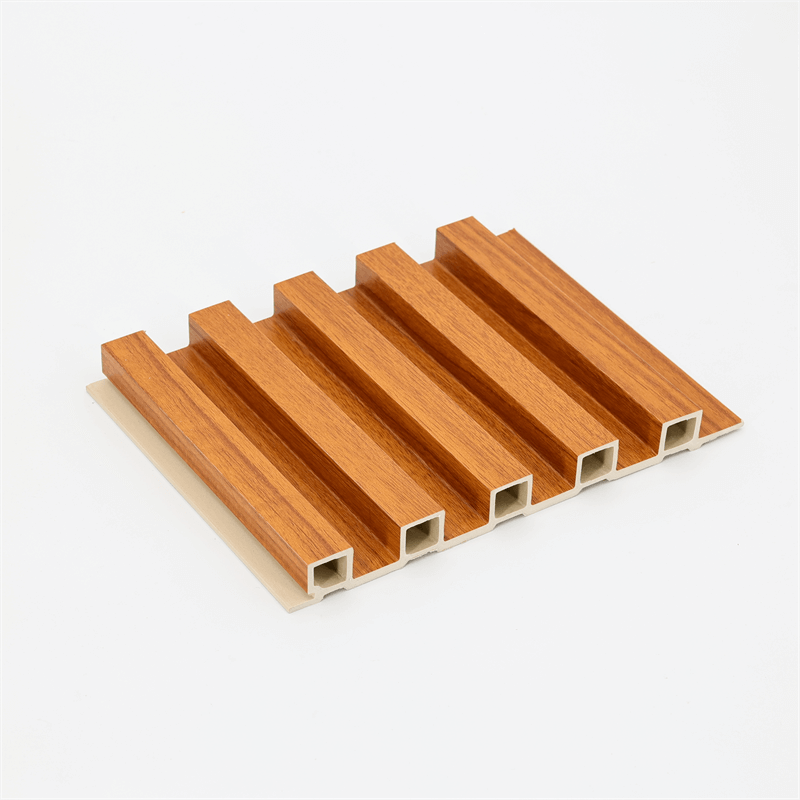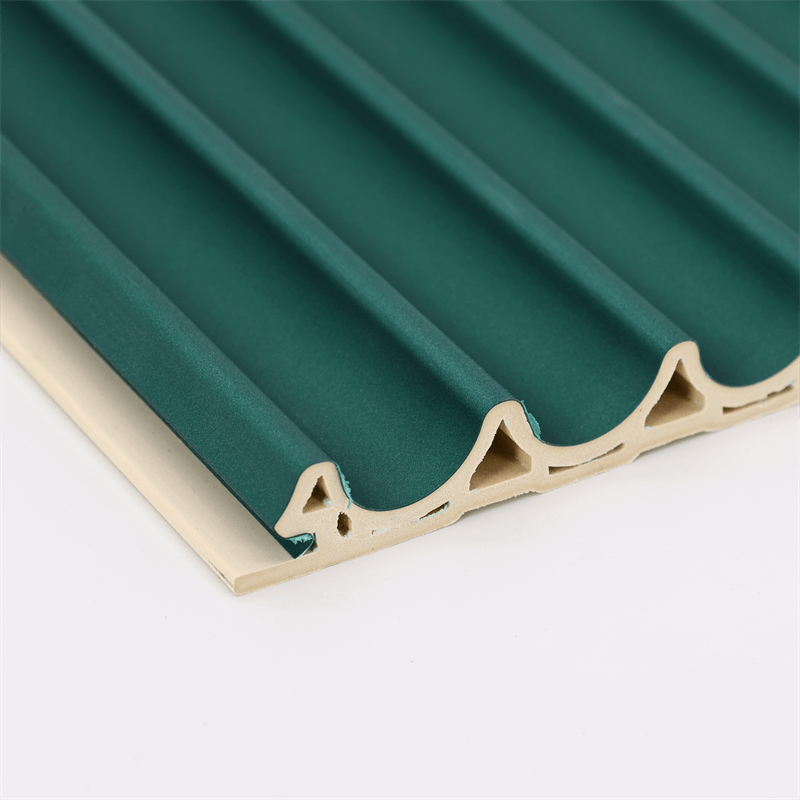In the realm of interior and exterior design, striking the perfect balance between aesthetics and functionality is a constant pursuit.
WPC (Wood-Plastic Composite) wall panels have emerged as a game-changing solution, offering a harmonious blend of visual appeal and practicality.
This essay delves into the ways in which WPC wall panels enhance both the aesthetics and functionality of architectural spaces.
It explores their versatility in design, their contribution to interior and exterior aesthetics, their role in creating functional spaces, and their impact on sustainability and eco-conscious design.

I. Versatility in Design: Infinite Possibilities
WPC wall panels offer an unparalleled level of versatility in design, allowing architects and designers to create unique and customized spaces.
These panels are available in various sizes, shapes, colors, and textures, enabling the exploration of endless design possibilities.
Whether it’s a sleek and contemporary look, a rustic and natural ambiance, or a bold and artistic statement, WPC panels can be tailored to suit any design concept.
Furthermore, the versatility of WPC panels extends to their ease of installation.
They can be easily cut, shaped, and installed, allowing for intricate designs, patterns, and even three-dimensional installations.
This adaptability empowers architects to push the boundaries of creativity and deliver spaces that captivate the eye.
II. Contributing to Interior and Exterior Aesthetics
WPC wall panels have a significant impact on the overall aesthetics of architectural spaces, both indoors and outdoors.
Their ability to mimic the natural beauty of wood while offering enhanced durability and versatility makes them a popular choice for interior applications.
In interior spaces, WPC panels can be used to create accent walls, feature panels, or full wall coverings, instantly elevating the visual appeal of the room.
The warmth and texture they bring contribute to a welcoming and comfortable atmosphere.
Additionally, the wide array of finishes and colors available in WPC panels allows designers to achieve specific design themes, whether it’s a modern and minimalistic approach or a traditional and rustic ambiance.
Similarly, in exterior applications, WPC wall panels enhance the visual aesthetics of buildings. They can be utilized as cladding materials to create facades that make a statement.
The ability to select from a range of colors and finishes gives architects the flexibility to achieve desired exterior appearances, ensuring that buildings seamlessly blend with their surroundings.

III. Creating Functional Spaces: Performance and Practicality
Beyond aesthetics, WPC wall panels offer a range of functional advantages that contribute to the overall performance and practicality of architectural spaces.
One of the key benefits is their durability. WPC panels are resistant to rot, decay, and insect infestation, ensuring that they maintain their structural integrity over time.
This durability reduces maintenance costs and efforts, making them a practical choice for both residential and commercial applications.
Furthermore, WPC wall panels contribute to sound insulation and acoustic control.
The composite material absorbs and dampens sound waves, resulting in improved acoustic qualities within a space.
This is particularly beneficial in environments where noise reduction is crucial, such as offices, schools, or hospitality venues.
Additionally, WPC panels offer moisture resistance, making them suitable for areas prone to humidity, such as bathrooms or kitchens.
They are less susceptible to water damage, mold growth, and warping, ensuring long-term performance even in damp conditions.
IV. Sustainability and Eco-Conscious Design
The use of WPC wall panels aligns with the principles of sustainability and eco-conscious design.
These panels are often made from recycled wood fibers and plastic materials, reducing the demand for virgin timber and minimizing waste.
By opting for WPC panels, architects contribute to the conservation of forests and the reduction of carbon emissions associated with traditional wood products.
Moreover, WPC panels require less maintenance compared to natural wood, reducing the need for frequent painting, staining, or sealing.
This translates into lower resource consumption and a decreased environmental impact. Additionally, the longevity of WPC panels minimizes the need for replacements, further reducing waste generation.
WPC wall panels have revolutionized the way architects and designers approach aesthetics and functionality in architecture.
Their versatility in design empowers creative exploration, while their contribution to interior and exterior aesthetics enhances the visual appeal of spaces.
Moreover, their durability, sound insulation properties, moisture resistance, and ease of maintenance contribute to functional and practical design.
Furthermore, the use of WPC panels aligns with sustainable and eco-conscious design principles, as they are often made from recycled materials and require minimal maintenance.
By incorporating WPC wall panels into architectural projects, designers can create spaces that are both visually captivating and environmentally responsible.
In conclusion, WPC wall panels offer a compelling solution for enhancing aesthetics and functionality in architecture.
Their versatility, visual appeal, durability, practicality, and sustainability aspects make them a preferred choice for architects and designers seeking to create spaces that seamlessly merge style with purpose.

In the ever-evolving field of architecture and design, WPC wall panels have emerged as a dynamic and innovative solution for enhancing both aesthetics and functionality.
Their versatility in design allows for endless possibilities, enabling architects to create unique and customized spaces that captivate the eye.
Whether it’s the warmth and texture they bring to interior environments or the striking facades they create in exterior applications, WPC panels have a profound impact on the overall aesthetics of architectural spaces.
Beyond their visual appeal, WPC wall panels offer practical benefits that contribute to the functionality and performance of buildings.
Their durability, resistance to moisture, and sound insulation properties ensure long-term structural integrity and create comfortable and functional spaces.
These panels are designed to withstand the test of time, reducing maintenance efforts and costs associated with traditional wood products.
Moreover, by choosing WPC wall panels, architects and designers actively contribute to sustainable and eco-conscious design practices.
The use of recycled materials in their production reduces the demand for virgin resources and helps minimize waste generation.
Additionally, the low maintenance requirements and long lifespan of WPC panels contribute to a more sustainable approach to building design, reducing the environmental impact over the life cycle of a structure.
As the world continues to prioritize sustainable design and seek materials that offer both visual appeal and functionality, WPC wall panels stand out as a reliable and forward-thinking solution.
They offer the best of both worlds, combining the natural beauty of wood with the durability and practicality of plastic.
By incorporating WPC panels into architectural projects, designers have the opportunity to create spaces that are not only aesthetically pleasing but also contribute to a more sustainable and resilient built environment.
In conclusion, WPC wall panels have revolutionized the architectural landscape, offering a perfect balance between aesthetics and functionality.
Their versatility, contribution to interior and exterior aesthetics, role in creating functional spaces, and impact on sustainability make them a preferred choice for architects and designers worldwide.
As the industry continues to evolve, WPC wall panels will undoubtedly remain at the forefront, inspiring creative design solutions that enhance the built environment in a sustainable and visually captivating manner.